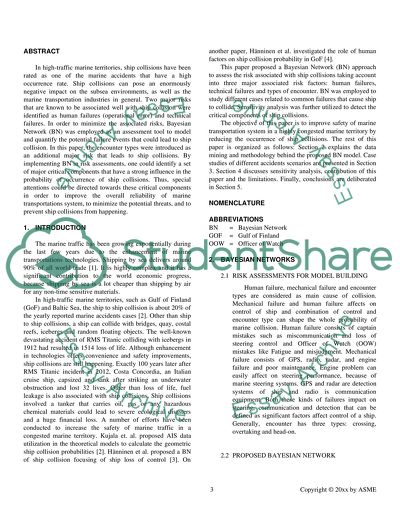: RISK ASSESSMENTS OF SHIP COLLISIONS IN HIGH-TRAFFIC MARINE TERRITORY Research Paper. Retrieved from https://studentshare.org/engineering-and-construction/1669504-risk-assessments-of-ship-collisions-in-high-traffic-marine-territory
: RISK ASSESSMENTS OF SHIP COLLISIONS IN HIGH-TRAFFIC MARINE TERRITORY Research Paper. https://studentshare.org/engineering-and-construction/1669504-risk-assessments-of-ship-collisions-in-high-traffic-marine-territory.


